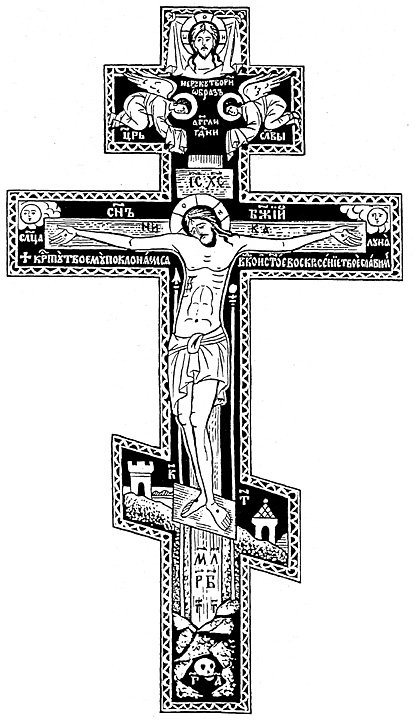In 1054 Leo, Bishop of Rome, sent three legates to Constantinople to attempt to settle the disputed questions of Greek and Latin usages. The chief legate was Humbert, Bishop of Silva Candida. The choice of Cardinal Humbert was unfortunate for both he and Cerularius were men of stiff and intransigent temper, whose mutual encounter was not likely to promote good will among Christians. The legates, when they called on Cerularius, did not create a favorable impression. Thrusting the pope’s letter at Cerularius, they retired without giving the usual salutations. The letter itself, although signed by Leo, had in fact been drafted by Humbert and was distinctly unfriendly in tone. After this the Patriarch Cerularius refused to have further dealings with the legates. Humbert lost patience and laid a Bull of Excommunication against Cerularius on the altar of the Church of Holy Wisdom. Among other ill-founded charges in this document, Humbert accused the Greeks of omitting the Filioque from the Creed! Humbert promptly left Constantinople without offering any further explanation of his act and, on returning to Italy, represented the whole incident as a great victory for the see of Rome. Cerularius and his synod retaliated by anathematizing Humbert (but not the Roman Church as such). This attempt at reconciliation left matters even worse.
But even after 1054 friendly relations between east and west continued. The two parts of Christendom were not yet conscious of a great gulf of separation between them and people on both sides still hoped that the misunderstandings could be cleared up without too much difficulty. The dispute remained something of which ordinary Christians in east and west were largely unaware. It was the Crusades which made the schism definitive: they introduced a new spirit of hatred and bitterness and they brought the whole issue down to the popular level.
 From a military point of view, however, the Crusades began with great éclat. Antioch was captured from the Turks in 1098, Jerusalem in 1099: the first Crusade was a brilliant, if bloody, success. At both Antioch and Jerusalem the Crusaders proceeded to set up Latin Patriarchs. At Jerusalem this was reasonable. The see was vacant at the time and a number of Greek Patriarchs, who lived in Cyprus in exile, served as Patriarchs of Jerusalem. The whole population of Palestine (Greek as well as Latin) at first accepted the Latin Patriarch as their head. A Russian pilgrim at Jerusalem in 1106-7, Abbot Daniel of Tchernigov, found Greeks and Latins worshipping together in harmony at the Holy Places, though he noted with satisfaction that at the ceremony of the Holy Fire the Greek lamps were lit miraculously while the Latin lamps had to be lit from the Greek ones. In Antioch the Crusaders found a Greek Patriarch actually in residence. Shortly after, however, he withdrew to Constantinople. The local Greek population was unwilling to recognize the Latin Patriarch whom the Crusaders set up. Thus from 1100 onward there existed a local schism at Antioch.
From a military point of view, however, the Crusades began with great éclat. Antioch was captured from the Turks in 1098, Jerusalem in 1099: the first Crusade was a brilliant, if bloody, success. At both Antioch and Jerusalem the Crusaders proceeded to set up Latin Patriarchs. At Jerusalem this was reasonable. The see was vacant at the time and a number of Greek Patriarchs, who lived in Cyprus in exile, served as Patriarchs of Jerusalem. The whole population of Palestine (Greek as well as Latin) at first accepted the Latin Patriarch as their head. A Russian pilgrim at Jerusalem in 1106-7, Abbot Daniel of Tchernigov, found Greeks and Latins worshipping together in harmony at the Holy Places, though he noted with satisfaction that at the ceremony of the Holy Fire the Greek lamps were lit miraculously while the Latin lamps had to be lit from the Greek ones. In Antioch the Crusaders found a Greek Patriarch actually in residence. Shortly after, however, he withdrew to Constantinople. The local Greek population was unwilling to recognize the Latin Patriarch whom the Crusaders set up. Thus from 1100 onward there existed a local schism at Antioch.
The history of the Great Schism is filled with misunderstandings, politics and men just wanting to win and be right. Sad!
